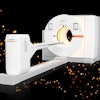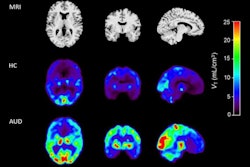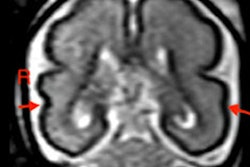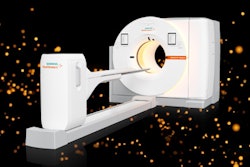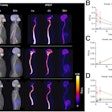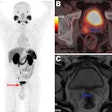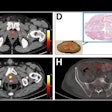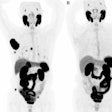Women but not men with alcohol use disorder (AUD) have significantly lower levels of protein involved in the brain’s immune response, a group at Yale University in New Haven, CT, has reported.
The finding is from PET scans in 41 individuals (20 women) with mild-to-moderate AUD and was related to poorer cognitive function, noted lead author Yasmin Zakiniaeiz, PhD, of the school’s psychiatry department.
“Women have a greater vulnerability to alcohol-induced neurodegeneration, thus, there is a critical need to examine sex differences in neuroimmune mechanisms underlying AUD to inform novel treatment strategies for women,” Zakiniaeiz and colleagues wrote. The study was published May 22 in Biological Psychiatry.
Rates of alcohol use, high-risk drinking, and AUD in women continue to increase, and, alarmingly, alcohol-related deaths have recently increased at a greater rate in women than men, according to the authors.
This suggests that women with AUD may be more susceptible to the neurotoxic effects of chronic alcohol use, yet potential sex differences in the neuroimmune systems of people living with AUD are not well understood, the group wrote.
To bridge the knowledge gap, the researchers conducted a brain PET study to compare imaging results among women with AUD versus control women and men with AUD versus control men. They used a radiotracer that binds to translocator protein (TSPO) on glial cells, which moderate the brain’s immune response.
The researchers recruited 78 participants, 41 with AUD (20 women) and 37 controls (17 women) from the local population. Participants reported drinking on average five drinks per session, five days a week, for 15 years. In addition to PET scans, participants completed mood and anxiety questionnaires, as well as tests to assess executive function, verbal learning, and memory.
According to the findings, people with versus without AUD had significantly lower TSPO availability in all brain regions. Women (but not men) with AUD had significantly lower TSPO availability (by an average of 21%) in the cerebellum, hippocampus, striatum, and frontal cortex (p = 0.022) compared with sex-matched controls.
In addition, women with versus without AUD performed worse on executive function tests (p=0.020), the researchers reported.
“The main finding of lower microglia marker levels in women with AUD compared to control women extends our understanding of the influence of alcohol on the neuroimmune system,” the group wrote.
Future studies should examine whether microglia levels recover with abstinence and the relationship to changes in clinical and cognitive outcomes, as well as determine how these sex-specific neuroimmune deficits may contribute to alcohol-induced neurodegeneration, the group noted.
Ultimately, the findings highlight that the brain’s neuroimmune system could be a potential target for medication development that could improve treatment outcomes for women with AUD, the researchers suggested.
“Women with AUD may particularly benefit from novel neuroimmune-modulating treatments for AUD,” the group concluded.
The full study is available here.



